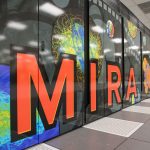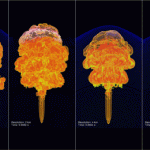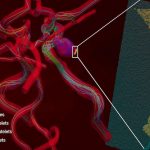
At a special two-day symposium last month, Argonne invited back many of the visionaries who in some way contributed to the lab’s 30 years in advancing parallel computing and computational science. Most if not all of these individuals have made…

At a special two-day symposium last month, Argonne invited back many of the visionaries who in some way contributed to the lab’s 30 years in advancing parallel computing and computational science. Most if not all of these individuals have made…

Research teams from around the world are preparing to use Mira, Argonne’s new petaflops supercomputer, to tackle the most challenging problems in science and engineering today. What happens when a star explodes? Can we find alternative fuel sources? How hot…

Mira will provide billions more processor-hours per year to the scientists, engineers, and researchers who use it to run complex simulations of everything from nuclear reactors to blood vessels through allocations awarded through INCITE, ALCC and Director’s Discretionary programs. [Photo…

Over the next two months, ALCF’s Early Science Program projects are expected to use approximately 2 billion core-hours on Mira! These select sixteen projects are based on state-of-the-art petascale parallel applications and span a wide range of scientific fields, numerical…

Leopold Grinberg of Brown University and an international team of researchers have used three of the world’s fastest supercomputers to create a detailed and sophisticated model of clot formation in an aneurism — a bulging of a vessel wall as…

The DOE’s Leadership Computing Facilities at Argonne and Oak Ridge national laboratories have awarded a combined 4.7 billion supercomputing core hours to 61 science and engineering projects through its 2013 Innovative and Novel Computational Impact on Theory and Experiment program.…